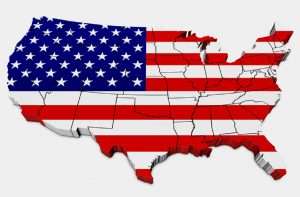By a vote of 6-3, the U.S. Supreme Court held that the Constitution requires unanimous jury verdicts for convictions in criminal cases. Writing for the Court in Ramos v. Louisiana, Justice Neil Gorsuch explained that ” the Sixth Amendment right to a jury trial—as incorporated against the States by way of the Fourteenth Amendment—requires a
unanimous verdict to convict a defendant of a serious offense.” (Whether jury unanimity is required in cases involving “petty offenses” was not before the Court, as noted in a footnote to the opinion.) This decision overturned the conviction of Evangelisto Ramos, who was convicted by nonunanimous jury in Louisiana. Nonunanimous jury verdicts in criminal cases were also allowed in Oregon.
The division among the justices in Ramos is quite something:
GORSUCH, J., announced the judgment of the Court, and delivered the opinion of the Court with respect to Parts I, II–A, III, and IV–B–1, in which GINSBURG, BREYER, SOTOMAYOR, and KAVANAUGH, JJ., joined, an opinion with respect to Parts II–B, IV–B–2, and V, in which GINSBURG, BREYER, and SOTOMAYOR, JJ., joined, and an opinion with respect to Part IV–A, in which GINSBURG and BREYER, JJ., joined. SOTOMAYOR, J., filed an opinion concurring as to all but Part IV–A. KAVANAUGH, J., filed an opinion concurring in part. THOMAS, J., filed an opinion concurring in the judgment. ALITO, J., filed a dissenting opinion, in which ROBERTS, C. J., joined, and in which KAGAN, J., joined as to all but Part III–D.
Here’s how that breaks down: Six justices (Gorsuch, Thomas, Ginsburg, Breyer, Sotomayor, Kavanaugh, agreed with the Court’s bottom line conclusion, but Justice Gorsuch’s opinion is only joined in its entirety by three justices (Gorsuch, Ginsburg). Justice Alito’s dissent was joined by Chief Justice Roberts and Justice Kagan, in part.
Justice Thomas wrote separately because he wanted to “make clear that this right applies against the States through the Privileges or Immunities Clause of the Fourteenth Amendment, not the Due Process Clause.” Historically, the Court has incorporated rights against the states through the Due Process Clause. Many academics think this is an error, and Justice Thomas has long indicated he does as well.
One issue dividing justices in Ramos is the treatment of precedent, as the decision overturned Apodaca v. Oregon, a 1972 decision upholding the constitutionality of nonunanimous criminal convictions in state court. Both Justices Sotomayor and Kavanaugh wrote separately to discuss the reasons for overturning Apodaca. (Sotomayor also wanted to note the “racially biased origins” of laws allowing nonunanimous juries to convict people of criminal offenses.)
Justice Alito’s dissent stressed the importance of stare decisis. This issue also likely explains the Court’s lineup here, as Chief Justice Roberts and Justice Kagan are the Court’s most vocal defenders of upholding precedent (though not always in the same cases). Justice Kagan has become particularly vocal in her defense of stare decisis, so it’s also no surprise that she does not join the portion of Alito’s dissent that explains why, in his view, the argument for overturning Apodaca was not as strong as the argument to overturn precedents in other recent cases.
(See also Eugene’s post on the opinion below.)
Today’s second opinion, Thryv v. Click-to-Call Technologies, concerning inter partes review of patent claims also had an interesting 7-2 lineup (if, perhaps, less interesting subject matter). Justice Ginsburg wrote for a seven justice majority. Justice Gorsuch, joined by Justice Sotomayor, dissented. Interestingly, Justices Thomas and Alito declined to join a small part of Ginsburg’s majority, and Sotomayor declined to join the last part of Gorsuch’s dissent.
Today’s third opinion (about which I hope to say more later), was Atlantic Richfield v. Christian, an interesting case involving the availability of state law remedies for hazardous waste site cleanups under the federal Superfund law. The Court was unanimous on some issues, but split 8-1 on one question, and 7-2 on another.
Chief Justice Roberts wrote the opinion for the Court in Atlantic Richfield. In the first part of his opinion, the Court unanimously concluded it had jurisdiction to hear the case. As noted above, the remainder of the opinion was either 8-1 or 7-2. Justice Alito dissented in part, on the basis that the Court was too permissive in allowing state court challenges to federally approved Superfund cleanups. Justice Gorsuch, joined by Justice Thomas, dissented from a different portion of the opinion which would preclude landowners from pursuing state common law remedies for hazardous waste site cleanups. In Justice Gorsuch’s view, the federal Superfund statute was intended to supplement traditional state law remedies, not supplant them. (Time permitting, I’ll write a separate post on this case after I’ve had the time to dig in.)
Two other tidbits: Justice Gorsuch was the one justice to write an opinion in all three cases decided today. Also, in today’s orders, the Supreme Court denied the Solicitor General’s request for oral argument time as an amicus for the first time in a decade.

from Latest – Reason.com https://ift.tt/2XS2ExA
via IFTTT


